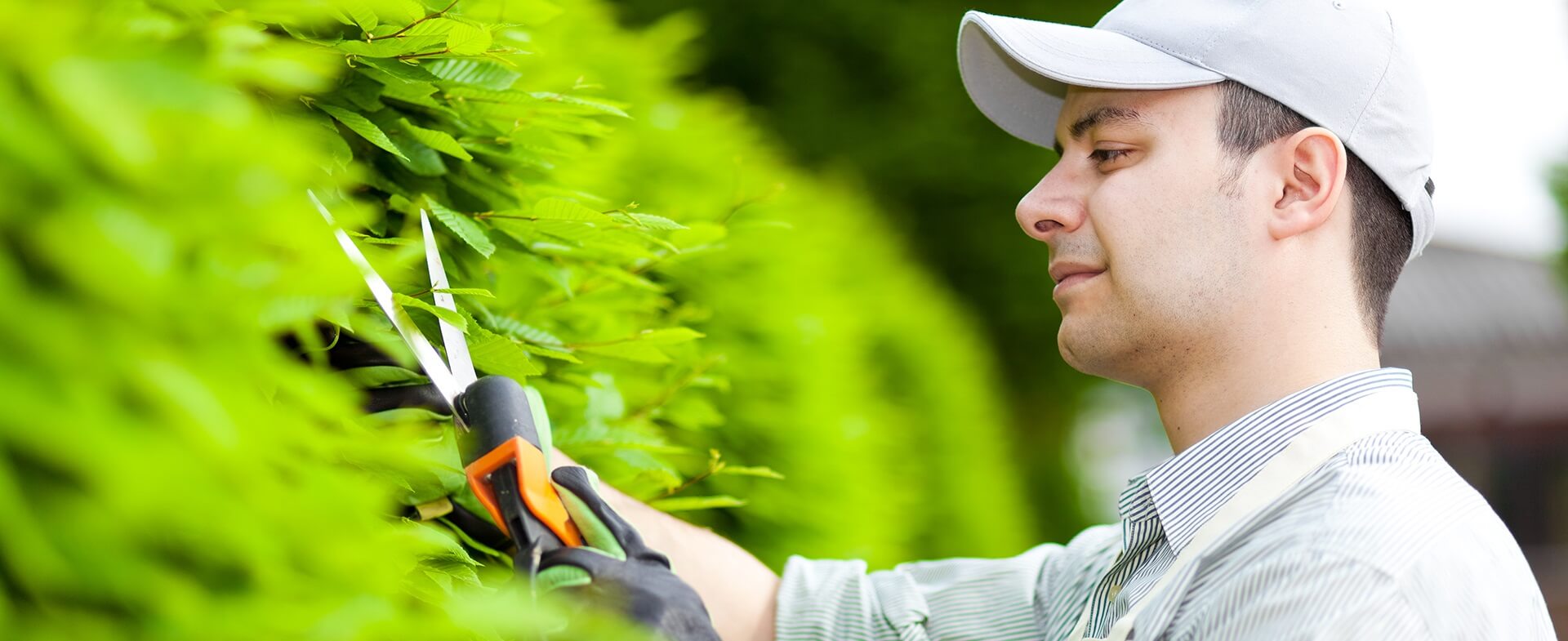The Future of Urban Agriculture: Vertical Gardening
Posted on 26/08/2025
The Future of Urban Agriculture: Vertical Gardening
Urbanization continues to reshape the world, challenging traditional concepts of farming, food production, and sustainability. One of the most promising solutions for food security and green urban spaces is vertical gardening. This innovative method of agriculture propels us toward a future where cities become self-sustaining through the efficient use of space and resources. In this article, we explore the evolution, technologies, benefits, challenges, and prospects of indoor vertical farming--the cornerstone of future urban agriculture.

Understanding Vertical Gardening in Urban Agriculture
Vertical gardening refers to cultivating plants on vertically inclined surfaces or stacked layers, maximizing growth potential in limited urban spaces. Unlike traditional farming, which expands horizontally, vertical farms go upwards, transforming apartments, skyscrapers, and small plots into lush, food-producing habitats.
Why Is Vertical Gardening Gaining Popularity?
- Space-Efficiency -- Urban land is scarce and expensive; growing up instead of out makes agriculture viable anywhere.
- Year-Round Production -- By controlling environmental factors, crops thrive regardless of seasonal changes.
- Sustainability -- Vertical gardens use less water, fewer pesticides, and can harness renewable energies.
- Local Food Security -- Reducing the distance from farm to fork, vertical farming ensures fresher produce and less carbon footprint.
The Evolution of Urban Agriculture and Vertical Gardening
Urban agriculture is not new. Community gardens, rooftop farms, and allotments have long supported city dwellers. However, vertical gardening has revolutionized this landscape by introducing cutting-edge techniques. With limitations on urban sprawl and increasing populations, the need for innovative approaches to urban food production is ever more critical.
Major Milestones in Vertical Gardening
- Introduction of hydroponics and aquaponics systems in urban settings
- Development of vertical towers and modular growth walls for buildings
- Launch of LED grow lights for energy-efficient indoor farming
- Rise of AI and IoT for optimized resource management in urban gardens
Types of Vertical Gardening in Cities
Urban environments allow for a variety of vertical gardening systems. Each offers unique advantages and serves different spaces and crops.
1. Living Walls and Green Facades
- Living walls integrate plants into building exteriors and interiors, improving air quality and visual appeal.
- Green facades use climbing plants rooted at the ground or in containers, wrapping around vertical surfaces.
2. Modular Vertical Farms
- Stacked planting systems in urban greenhouses or warehouses allow large-scale food production.
- Aquaponics and hydroponics provide soil-less cultivation, boosting yield per square meter.
3. Balcony and Window Gardens
- Household solutions for individuals to grow herbs, vegetables, or ornamentals at home.
- Easy-to-install shelving or trellis systems suit patios, balconies, and even kitchen walls.
Advantages of Vertical Gardening for Future Cities
Vertical gardening is attracting city planners, environmentalists, tech entrepreneurs, and everyday residents. Here are some of its most notable benefits:
Space and Productivity Maximization
- High Yield: Leveraging the vertical axis allows more crops to be grown per square foot.
- Urban Integration: Farms can be set up in unused or unconventional locations--rooftops, abandoned buildings, or even subway stations.
Resource Efficiency and Environmental Impact
- Water Efficiency: Many systems recycle water, using up to 90% less than traditional methods.
- Pesticide-Free Food: Controlled environments mean fewer synthetic chemicals and healthier produce.
- Reduced Emissions: Local food production decreases transportation distances, cutting carbon footprints.
Improved Urban Health and Well-being
- Cleaner air and reduced urban heat, thanks to increased greenery
- Opportunities for community engagement, education, and mental wellness
- Aesthetic enhancements that transform gray cityscapes into vibrant, green environments
Economic and Social Impact
- Creation of urban farming jobs and micro-enterprises
- Enhancement of local food security and community resilience
- Potential for farm-to-table businesses to thrive in metropolitan areas
Technological Innovations Driving the Future of Urban Vertical Gardens
The synergy between agriculture and technology is unlocking new frontiers. Smart vertical gardening employs the latest advances in automation, data analytics, and energy management.
Hydroponics and Aquaponics
- Hydroponics nurtures plants with nutrient-rich water, eliminating the need for soil.
- Aquaponics combines fish farming with plant cultivation, creating sustainable, closed-loop ecosystems.
LED Lighting and Environmental Controls
- Advanced LED grow lights replicate the sun's spectrum, supporting plant growth indoors year-round.
- Precision temperature, humidity, and CO2 monitoring ensure optimal plant environments.
Automation, AI, and IoT Integration
- Automated irrigation, nutrient dosing, and climate control streamline processes and reduce human error.
- AI-powered data analysis optimizes crop cycles, maximizes yields, and minimizes resource use.
- Internet of Things (IoT) sensors provide real-time feedback and remote monitoring.
Renewable Energy Integration
- Solar panels, geothermal, and wind energy reduce reliance on fossil fuels in urban farms.
- Innovative energy storage solutions support uninterrupted growing cycles.
Challenges and Considerations for Urban Vertical Gardening
Despite its promise, vertical gardening faces several hurdles that must be addressed for widespread adoption.
High Initial Investment and Operational Costs
- Setting up commercial-scale indoor vertical farms requires significant capital outlay for technology and infrastructure.
- Energy costs can be substantial, especially for artificial lighting and climate control.
Crop Limitations and Knowledge Gap
- Not all crops are suitable for vertical farming; leafy greens and herbs thrive, but grains and fruit trees pose challenges.
- The learning curve for managing complex systems and integrating new technology remains steep for many urban farmers.
Regulation and Urban Planning
- Building codes, zoning laws, and food safety regulations may limit vertical farming initiatives.
- Collaboration with local authorities and urban planners is essential for long-term success.
Socio-economic Inequality
- Access to vertical gardening systems and fresh, locally-grown food must be equitable to prevent widening urban divides.
- Innovative financing and community programs can help bridge this gap.
Case Studies: Successful Urban Vertical Farming Projects
Across the globe, ambitious projects signal the bright future of urban agriculture through vertical gardening.
Farm.One, New York City
- Microgreens, herbs, and edible flowers grown in climate-controlled, LED-lit indoor farms.
- Delivering fresh, hyperlocal produce directly to top Manhattan restaurants, reducing transportation and spoilage.
Spread, Japan
- Robotic vertical farms producing up to 30,000 heads of lettuce daily with minimal human labor.
- Extremely energy and water efficient, exemplifying future-ready urban agriculture techniques.
Sky Greens, Singapore
- Utilizes rotating, hydraulically-powered vertical towers to maximize sunlight exposure and minimize land use.
- Supplies urban markets with fresh leafy greens, proving the viability of commercial vertical farming in dense megacities.

The Future of Vertical Gardening in Urban Agriculture
As cities face escalating pressure to feed growing populations amid climate change and space constraints, the future of urban agriculture will increasingly depend on vertical gardening. Advances in automation, genetics, and system integration are making high-density, sustainable food production a reality within city limits.
Emerging Trends to Watch
- Integration with Smart Cities: Vertical farms will become a part of smart urban infrastructure--connected, efficient, and sustainable.
- Community-Driven Solutions: Co-op models, community gardens, and neighborhood-based initiatives will enhance food sovereignty.
- Biophilic Design: Vertical greenery incorporated into architecture for improved urban biodiversity and human well-being.
The Role of Policy and Innovation
- Urban agriculture policies supporting incentives, education, and research will drive innovation.
- Public-private partnerships and accessibility initiatives can unlock the benefits of vertical gardening for all city residents.
Urban Vertical Gardening: Shaping Greener and Healthier Cities
The shift from rural to urban populations is irreversible, making food security and sustainability pressing urban priorities. Vertical gardening and innovative urban farming present effective answers by transforming how, where, and what we grow in cities. With technology, policy, and community engagement working together, the future of urban agriculture will not only feed our cities but also restore balance between people and the environment.
Soon, skyscrapers won't just house people--they'll house lush vertical farms harvesting fresh produce year-round. Rooftops and balconies will be blooming. The integration of food production with urban living spaces is inevitable and transformative. By embracing urban vertical gardening, we pave the way for resilient, green, and healthy cities of the future.
Key Takeaways
- Vertical gardening is the future of urban agriculture, offering space-efficient, sustainable solutions for city food production.
- Innovative technologies--hydroponics, LED lighting, automation--are making urban vertical farms more productive and eco-friendly.
- Challenges persist but can be overcome through policy, education, and inclusive access to technology.
- The evolution of vertical agriculture in cities will foster green jobs, enhance public health, and transform urban landscapes.
Are you ready to be part of the urban farming revolution? Embrace vertical gardening and help grow a sustainable future for cities worldwide!

